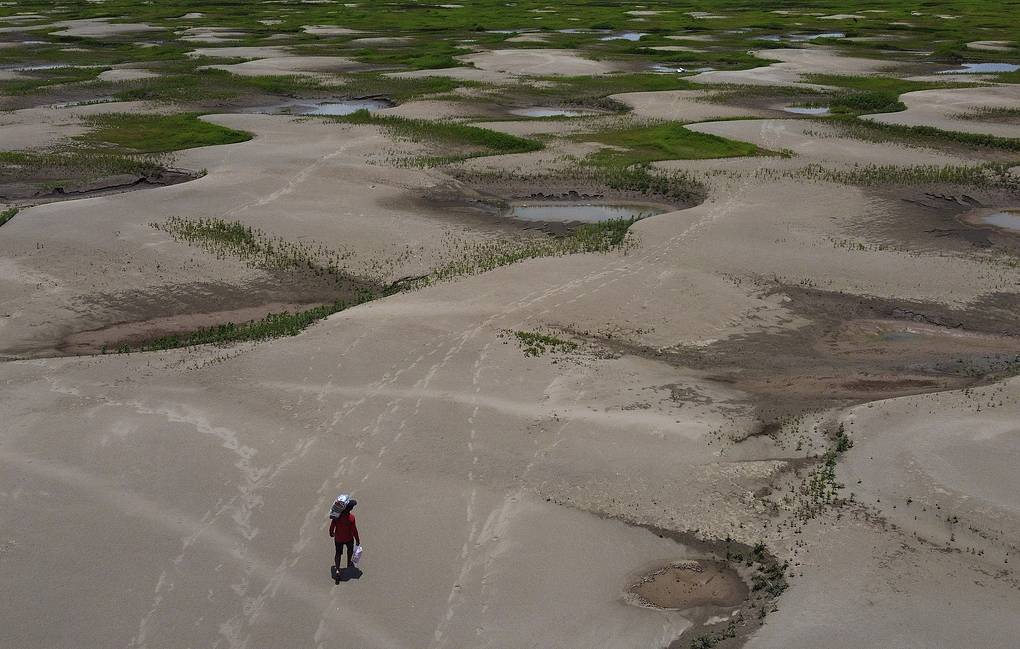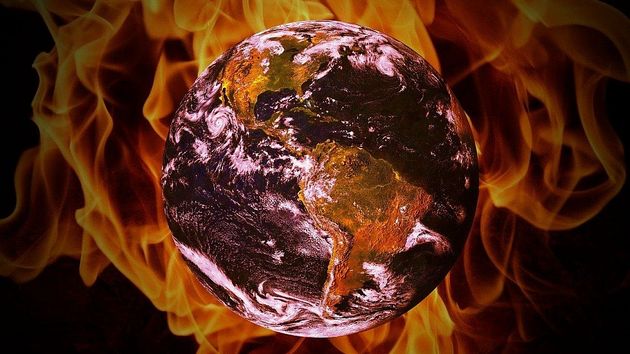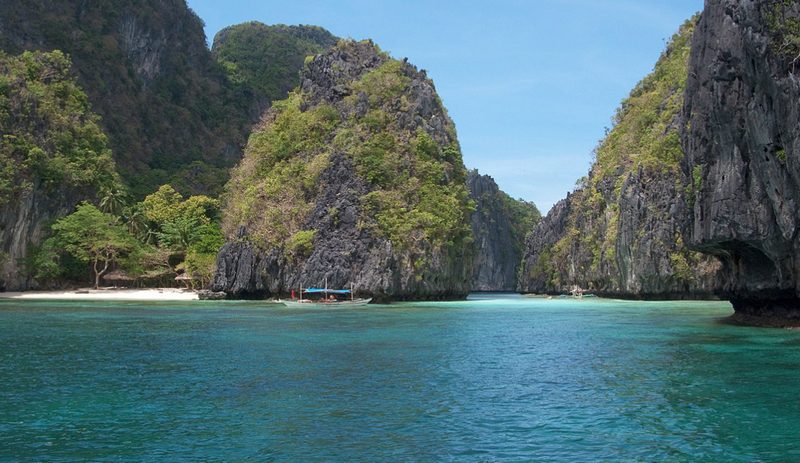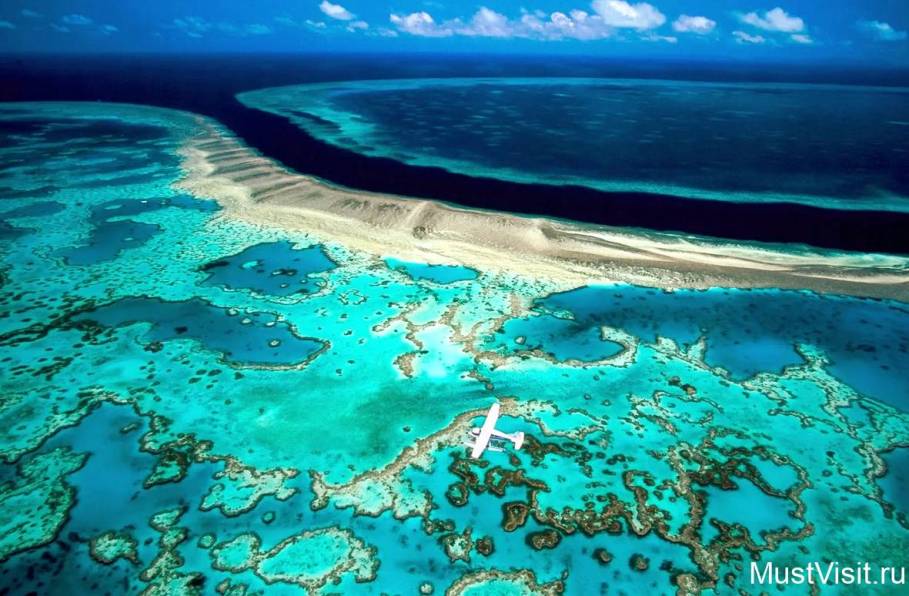Acceleration of global warming could cause serious climate change. According to scientists, the consequences could include a rise in sea level by several meters, destruction of ecosystems, loss of biodiversity, and changes in global heat redistribution and precipitation patterns. The surface temperature of the Pacific Ocean has increased three times faster than the global average since 1980. During this time, the frequency of marine heat waves has roughly doubled since 1980, they have become more intense and last longer.
Scientists from the Institute of Geophysics and Meteorology at the University of Cologne and the Helmholtz Centre for Ocean Research (Germany) have predicted that the Earth’s climate could reach a point of no return in the coming decades. The results of the study were published in the journal Geophysical Research Letters.
El Niño is a phenomenon that causes warmer temperatures in parts of the Pacific Ocean and leads to significant changes in rainfall and temperatures around the world. It can increase rainfall on the west coast of North and South America and cause drought in Canada and Africa. In recent years, meteorologists have noticed that El Niño events are becoming more extreme.
To understand whether global warming could increase the frequency and intensity of these extreme events, the researchers collected historical data and data from other studies on the impact of rising global temperatures. They fed this data into the CESM1 climate model and ran it through various temperature-rise scenarios. The estimates showed that if greenhouse gas emissions are not reduced, global temperatures could rise by 2.9 by 2100. The model’s results showed that if temperatures continue to rise to 3.7° after 2100, a so-called tipping point could be reached, where virtually all El Niño events would be extreme. This means that even if humanity were to completely halt its impact on climate change, it would take centuries for the weather to return to “normal.”
The model also predicted that extreme El Niño events would become more frequent, perhaps every four years. Other changes included a southward shift of the Gulf Stream, which would lead to significantly less rainfall in Canada and the northern United States and more rainfall in the southern United States.
Acceleration of global warming could cause serious climate change. According to scientists, the consequences could include a rise in sea levels by several meters, the destruction of ecosystems, loss of biodiversity, and changes in global heat redistribution and precipitation patterns.
An increase in the average temperature on Earth by more than 1.5 degrees Celsius will lead to significant climate changes on the planet. This is evidenced by the results of a study published in the British scientific journal Nature Communications.

It has been established that if current climate trends continue this century, the risk of a tipping point will be 45%. The risk will also increase for every 0.1°C increase in temperature beyond the 1.5°C threshold. If global warming continues to exceed this limit, there is a risk of a tipping point by 2300. According to scientists, the consequences could include a rise in global sea levels of several meters, the destruction of ecosystems, loss of biodiversity, and changes in global heat distribution and precipitation patterns.
Scientists believe that to stabilize the environmental situation, it is necessary to significantly reduce greenhouse gas emissions into the atmosphere in the coming years. It is noted that by 2100 the balance between gas emissions and their absorption from the atmosphere should be zero.
It was previously reported that the average observed global warming for the period 2014-2023 was 1.19 degrees Celsius, and it was entirely caused by human activity. The rate of acceleration of warming over this decade has become unprecedented, reaching 0.26 degrees Celsius in 2014-2023. Among the reasons for this, scientists cite the continued high level of greenhouse gas emissions, as well as a decrease in the strength of aerosol cooling.

The work of an international team of scientists, published in the journal Nature Communications, examines four natural systems that are key to the Earth’s climate: the Atlantic currents, the Amazon rainforest, and the glaciers of the Arctic and Antarctic. The destruction of even one of these systems as a result of rising global temperatures would lead to a domino effect and a tipping point in the development of the planet’s climate.
UN Secretary-General Antonio Guterres has previously said that the Earth’s temperature could rise by 2.8° by the end of the century if countries do not radicalize their decarbonization strategies. The key agreement in this area is the 2015 Paris climate agreement, which envisages measures to limit the increase in global temperatures to 1.5°, with a maximum of 2° by 2100.
A triple climate whammy – accelerating sea level rise, ocean warming and acidification – threatens Pacific islands, which face increasing threats to their socio-economic viability and even their very existence due to climate change.
The World Meteorological Organization’s (WMO) State of the Climate in the Southwest Pacific 2023 report details how sea level rise in the region is exceeding the global average. Sea surface temperatures have been rising three times faster than the global average since 1980. During that time, the frequency of marine heat waves has roughly doubled since 1980, and they have become more intense and last longer.
The report was launched at the Pacific Islands Forum in Tonga, accompanied by a special briefing paper on rising sea levels in a warming world, which United Nations Secretary-General António Guterres called a “wake-up call.” A global catastrophe is threatening this Pacific paradise, he said, with mean sea levels rising at an unprecedented rate. The ocean is overflowing its banks. The reason is obvious: greenhouse gases, which are overwhelmingly produced by burning fossil fuels, are frying our planet. And the sea is literally absorbing the heat.
Despite only accounting for 0.02% of global emissions, the Pacific Islands are uniquely exposed. Their average altitude is only 1–2 metres above sea level, 90% of the population lives within 5 km of the coast, and half of the infrastructure is within 500 metres of the sea.

The host country of the 53rd Pacific Islands Forum Leaders’ Meeting, the Kingdom of Tonga, is on the front lines of the fight against climate change and is exposed to hazards such as tropical cyclones and floods. It was also hit by a massive volcanic eruption in January 2022 that triggered a basin-wide tsunami and released massive amounts of water vapor into the Earth’s atmosphere, impacting the global climate.
Climate change has become a global crisis and is the defining issue facing humanity today. The ocean absorbs more than 90% of the excess heat emitted by greenhouse gases and is undergoing changes that will be irreversible in the coming centuries.
WMO welcomes the Pacific Weather Preparedness programme as part of the international Early Warning for All initiative. Early warning systems help to take proactive measures such as evacuation plans, resource allocation and infrastructure strengthening. Although they are a lifeline, they are only available in one-third of the world’s small island developing states.
Overall, 34 hydrometeorological hazards were recorded in the southwest Pacific in 2023 – most of them storm-related or flood-related – causing more than 200 deaths and affecting more than 25 million people in the region. Severe tropical cyclones Kevin and Judy struck the island nation of Vanuatu within 48 hours of each other in March. Cyclone Lola, which struck Vanuatu on 24 October, prompted the Vanuatu government to declare a six-month state of emergency in the affected provinces. Tropical Cyclone Gabrielle brought significant rainfall, causing severe impacts on the eastern part of New Zealand’s North Island in February 2023. Elsewhere in the region, Typhoon Doksuri brought heavy rainfall and flooding to the Philippines in July 2023, killing at least 45 people and displacing nearly 313,000.
Climate change could destroy the Great Barrier Reef. Australian climate scientist Joelle Gergis from the University of Melbourne reported that the Great Barrier Reef likely suffered irreparable damage during the latest bleaching episode recorded this spring. She made the corresponding statement during a speech at a climate conference in Auckland. In her opinion, the bleaching of the reef’s corals that occurred in the spring affected almost 80% of this unique natural object. It is quite possible that this year’s extensive reef bleaching dealt a fatal blow to the largest living structure on the planet, TASS reports with reference to information from the radio station Radio New Zealand.

The Australian Reef Conservation Authority reported a massive coral bleaching event on the Great Barrier Reef, recorded by aerial photography, in March 2024. Data obtained by scientists showed that the event affected two-thirds of the Great Barrier Reef Marine Park, which covers an area of more than 334 thousand square kilometers. It was noted that corals growing in shallow waters were most severely affected, and the main cause of the bleaching was an increase in the average temperature of the world’s oceans, caused by global climate change and the warming effect of the natural El Niño phenomenon in the Pacific Ocean.
The world’s largest coral reef is located in the Pacific Ocean. It stretches along the north-eastern coast of Australia for 2,500 km and covers an area of about 344.4 thousand square meters. This ridge has more than 2,900 individual coral reefs and 900 islands.
In recent decades, the reef has suffered greatly from human activity, in particular, pollution of sea water by tourist and industrial facilities. In addition, tropical hurricanes and thunderstorms, as well as global warming, have a negative impact on the corals. According to the latest data from the Australian Academy of Sciences, if humanity fails to stop global warming in the next decade, by 2050 the bleaching of the corals of the Great Barrier Reef will become irreversible and the reef will die.




